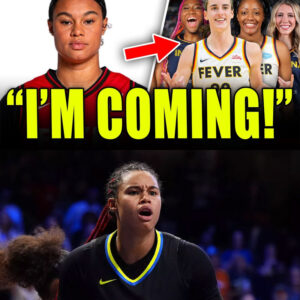The Caitlin Clark Effect Is an Economic Engine for Women’s Basketball

Increasing Opportunities and Changing Stigmas About Women In Sport
The Caitlin Clark Effect has been an economic engine for women’s basketball, boosting opportunities for and changing attitudes about the professional female sport.
During Clark’s junior and senior years playing for the University of Iowa team, she drew record-breaking crowds and millions of TV viewers to her games. She also is credited with increasing Iowa’s state GDP as much as $52.3 million during her four years in college, according to the Common Sense Institute Iowa.
Now as a professional basketball player for the Indiana Fever, her spotlight has brought a surge of interest to the Women’s National Basketball Association (WNBA). The result is a phenomenon that has caused such a dramatic shift that she has literally disrupted the economic landscape of sports by expanding the market wherever she played.
“Looking at the typical attendance at games without Caitlin Clark and compared to games with Caitlin Clark, we can attribute roughly one out of every six tickets being sold in the WNBA to the ‘Caitlin Clark Effect,’” said Victor Matheson, a professor of economics at the College of Holy Cross who specializes in the economic impact of sports.
Going Beyond the Home Crowd
What was particularly illuminating to experts was the fact that Clark’s presence affected markets in her away games, where she also drew record-breaking audiences and new fans.
“It’s pure joy in the arenas she plays in,” said Debbie Antonelli, an NCAA basketball and WNBA analyst for ESPN and ACC Network for the last 37 years, working with the Indiana Fever and the Charlotte Sting for the past 20 years. “Four franchises in the WNBA moved their home games to accommodate Fever games; that’s often double, triple or sometimes quadruple what [attendance] they would have gotten if they stayed in their arena.”
All entities tied financially to the industry have been beneficiaries of the “Caitlin Clark Effect.” The surging interest around women’s basketball has increased the profitability of the industry, and as a result, has encouraged investment.
“People [are] putting big money based on what they dream could be even if the money hasn’t justified the investment,” said Matheson. “There is no giant company that ever started that didn’t have someone basically going out on a limb and imagining what could happen. I think that athletes like Caitlin Clark and the success that she’s brought in terms of dollars really brings that imagination out in potential owners.”
Sparking WNBA Investment and Expansion
A surge of investments into the WNBA came in through brand partnerships and league expansion. Since the end of the 2023 season, the league signed eight new partnerships, the most significant being Delta Air Lines, Bumble and New Balance. In return, the WNBA delivered a record $136 million in media value for sponsors this past season, according to a 2024 study released about brand earnings from WNBA partnerships.
The league plans to expand with three new teams: the Golden State Valkyries in 2025, and teams in Toronto and Portland in 2026. A number of professional athletes have invested in franchise ownership in the WNBA in recent years, including Tom Brady, who purchased part-ownership of the Las Vegas Aces in March, and Sue Bird, who purchased part-ownership of the Seattle Storm in April.
While Clark has been the driving factor for the recent growth in women’s basketball, there have been several economic factors that contributed to her success.
“She is merely a tipping point in the lexicon of society where we are 50 years out from Title IX, so it is a time process,” said Alicia Jessop, an associate professor of sports administration at Pepperdine University who specializes in law and women’s leadership.
Title IX is a federal mandate providing equal opportunity for any sex in all educational settings. The law applies to public K-12 schools, public universities and private universities that receive federal benefits.
Since Title IX was enacted in 1972, it has helped female athletes access resources and financial support, which kept them engaged in athletic programs. Since women’s sports have only existed for 50 years, their leagues haven’t had as much time compared to men’s sports to draw audiences and grow marketplaces.
“When you go from no women playing sports to suddenly women playing sports, there’s not immediately going to be a market,” said Jessop.
Clark isn’t the first primetime female athlete to garner attention for her sport. Over the decades, media coverage has shifted toward women’s sports because of female athletes like Billy Jean King, Serena Williams, Lindsey Vonn who built a foundation of viewership. Nowadays, a new generation of female athletes like Simone Biles, Katie Ledecky and Ilona Maher continue to build on the success of their predecessors.
The Future Looks Bright Via the Caitlin Clark Effect
The “Caitlin Clark Effect” will benefit future women’s basketball players because of how much value and attention she has brought to the sport. In July, the WNBA signed an 11-year, $2.2 billion media rights deal in July with Disney, NBCUniversal and Amazon for the 2026 season. The league will earn $200 million per season, raking in more than triple the yearly revenue of the prior agreement of $50 million a year.
It’s no coincidence that a WNBA new television deal this valuable came after Clark’s record-breaking WNBA debut season. With the new media agreement, experts say that it will increase accessibility to WNBA broadcasts for fans, boosting viewership and attendance, as it has done for sports leagues historically.
“One of the things holding back women’s sports historically is there’s just no consistent coverage or broadcasting, and there’s no way to build an audience doing that,” said David Berri, a professor of economics at Southern Utah University who has spent the last two decades researching sports and economics. He explained that trying to watch the WNBA in years past was difficult because there were “no consistent games or a specific slot on television.”
“We have had this change this year, if you follow the WNBA, where every Sunday they had games on and the channel ION had games every Friday night, and ION is in 60% of homes,” said Berri. “So now you know where it’s gonna be and that makes a difference. Now you can plan on watching it, but in the past you couldn’t.”
Even though Clark was credited with growing women’s basketball, Berri believes that Clark’s spotlight should also be attributed to “convenient timing” with a recent increase in coverage of women’s basketball.
Berri referenced a phenomenon where Larry Bird saved the National Basketball Association (NBA) in the 1979-80 season where the athlete supposedly drew attendance. Bird was the beneficiary of this title even though data eventually showed that the league saw actual attendance growth after games became televised.
“Going back to the Larry Bird story, whoever was [first] showing up on NBA television on TNT and TBS in the mid to late ‘80s, they were going to be considered the major stars driving the story, but the real important story is that they were put on the television,” said Berri.
Although Title IX and media coverage helped Clark reach success, her ability to bolster women’s basketball by attracting new fans and investors has benefited league mates, ownership groups and entities tied financially to the industry.
“She is making a shockingly low salary for the amount of money she is bringing into the league,” said Matheson. “Even as the highest-scoring women’s NCAA basketball player ever and the No. 1 pick in last season’s WNBA draft, Clark earned only $76,535 in her rookie season. “That being said, the revenue made in the league will trickle down to both her and all players in the league and increase salaries. The more revenue they make, the more the players in that league are going to benefit from that.”
The fact that the economic phenomenon that bolstered women’s basketball has been attributed to Clark goes to show how unprecedented her impact has been for the sport.
“Clarkenomics” Compares with Tiger Woods
“Clarkenomics—I coined the phrase last November because Caitlin is the greatest economic disruptor in the history of [women’s basketball],” said Antonelli, who last weekend was the recipient of The Curt Gowdy Media Award for the Basketball Hall of Fame. Antonelli also played on four NCAA women’s basketball tournament teams at North Carolina State University and was inducted in the Women’s Basketball Hall of Fame in 2022.
Stacked up to other influential athletes, Clark has been described as the Tiger Woods for women’s basketball because of the economic disruption he made in golf, said Antonelli.
“They weren’t so sure about Tiger,” said Antonelli. “His celebrity and his following increased all the purses and he was the disruptor in golf. When those things happen, they make people take a look at how and why they are doing things, and so that is what Caitlin has done.”
Outside of the WNBA benefitting, Berri shared that Clark’s record-breaking success at such a young age could encourage young female athletes to pursue a career in basketball.
“[Clark’s success] provides this huge impact on young girls because it provides them this image that ‘you can do this,’” said Berri. “It increases a willingness for girls to participate in sports and stay in sports. There is a big problem with girls getting out of sports because they just don’t see a future in it.”
Young athletes have Clark to look up to as an athlete but also as a representation of what women can do against the preexisting financial and cultural limitations, Antonelli believes.
“She’s a household name, not a basketball story and not a women’s sports story anymore. She is a cultural, ‘revolutional’ icon on her own,” said Antonelli.
Relative Articles
None found





